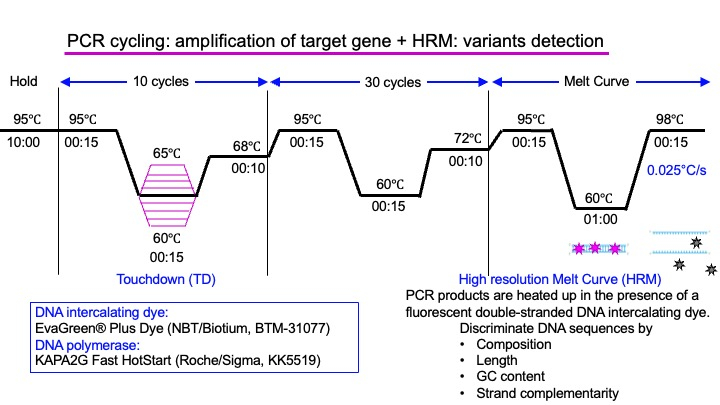

a DNA polymerase an enzyme that polymerizes new DNA strands heat-resistant Taq polymerase is especially common, as it is more likely to remain intact during the high-temperature DNA denaturation process.a DNA template that contains the DNA target region to amplify.Ī basic PCR set-up requires several components and reagents, including: The amount of amplified product is determined by the available substrates in the reaction, which becomes limiting as the reaction progresses. Most PCR methods amplify DNA fragments of between 0.1 and 10 kilo base pairs (kbp) in length, although some techniques allow for amplification of fragments up to 40 kbp. PCR amplifies a specific region of a DNA strand (the DNA target). Īpplications of the technique include DNA cloning for sequencing, gene cloning and manipulation, gene mutagenesis construction of DNA-based phylogenies, or functional analysis of genes diagnosis and monitoring of genetic disorders amplification of ancient DNA analysis of genetic fingerprints for DNA profiling (for example, in forensic science and parentage testing) and detection of pathogens in nucleic acid tests for the diagnosis of infectious diseases.Īn older, three-temperature thermal cycler for PCR Before the use of Taq polymerase, DNA polymerase had to be manually added every cycle, which was a tedious and costly process. If the polymerase used was heat-susceptible, it would denature under the high temperatures of the denaturation step. As PCR progresses, the DNA generated is itself used as a template for replication, setting in motion a chain reaction in which the original DNA template is exponentially amplified.Īlmost all PCR applications employ a heat-stable DNA polymerase, such as Taq polymerase, an enzyme originally isolated from the thermophilic bacterium Thermus aquaticus.
Touchdown pcr vs gradient pcr free#
The two DNA strands then become templates for DNA polymerase to enzymatically assemble a new DNA strand from free nucleotides, the building blocks of DNA. In the second step, the temperature is lowered and the primers bind to the complementary sequences of DNA. In the first step of PCR, the two strands of the DNA double helix are physically separated at a high temperature in a process called nucleic acid denaturation. PCR employs two main reagents- primers (which are short single strand DNA fragments known as oligonucleotides that are a complementary sequence to the target DNA region) and a DNA polymerase. Thermal cycling exposes reactants to repeated cycles of heating and cooling to permit different temperature-dependent reactions-specifically, DNA melting and enzyme-driven DNA replication. The majority of PCR methods rely on thermal cycling. PCR is now a common and often indispensable technique used in medical laboratory research for a broad variety of applications including biomedical research and criminal forensics.
Touchdown pcr vs gradient pcr series#
Using PCR, copies of very small amounts of DNA sequences are exponentially amplified in a series of cycles of temperature changes.

PCR is fundamental to many of the procedures used in genetic testing and research, including analysis of ancient samples of DNA and identification of infectious agents. PCR was invented in 1983 by American biochemist Kary Mullis at Cetus Corporation Mullis and biochemist Michael Smith, who had developed other essential ways of manipulating DNA, were jointly awarded the Nobel Prize in Chemistry in 1993. The polymerase chain reaction ( PCR) is a method widely used to rapidly make millions to billions of copies (complete or partial) of a specific DNA sample, allowing scientists to take a very small sample of DNA and amplify it (or a part of it) to a large enough amount to study in detail. Placing a strip of eight PCR tubes into a thermal cycler


 0 kommentar(er)
0 kommentar(er)
